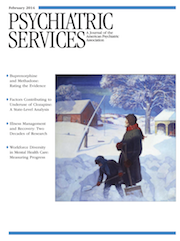Trends in Anxiolytic-Hypnotic Use and Polypharmacy in Taiwan, 2002–2009: A Nationwide, Population-Based Survey
Abstract
Objectives
Use of anxiolytics-hypnotics, including benzodiazepines and “z” hypnotics, is a public health concern. This study aimed to investigate the trends in prevalence of anxiolytic-hypnotic drug use and polypharmacy (simultaneous use of two or more anxiolytics-hypnotics) in Taiwan.
Methods
A dynamic sample of one million individuals who were randomly selected from the National Health Insurance database was used to detect populationwide trends in the use of anxiolytics-hypnotics in Taiwan between 2002 and 2009. The analyses included drugs that are administered orally, intravenously, or intramuscularly as well as single or compound drugs. The authors identified the number of individuals who used the drugs, the sum of days of reported drug use for all individuals (person-days), and the distribution of anxiolytic-hypnotic polypharmacy for all claims for ambulatory, pharmacy, and hospital care.
Results
Annual prevalence of any anxiolytic-hypnotic use in Taiwan was higher than 20%. The number of person-days greatly increased from 2002 (4.0%) to 2009 (6.6%). The increases in use between 2002 and 2009 were greatest for clonazepam (prevalence, 7% versus 1.8%; person-days, .2% versus .6%) and zolpidem (prevalence, 2.4% versus 4.2%; person-days, .5% versus 1.5%). Polypharmacy accounted for almost 70% of all person-days of anxiolytic-hypnotic use.
Conclusions
This nationwide, population-based survey presents real-world epidemiological evidence about anxiolytic-hypnotic use. The adverse effects of the long-term use of anxiolytics-hypnotics have been established, and unnecessary use of these drugs, particularly in polypharmacy regimens, should be avoided.



